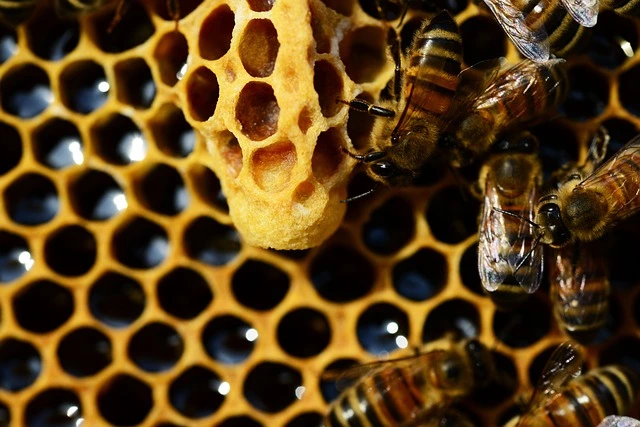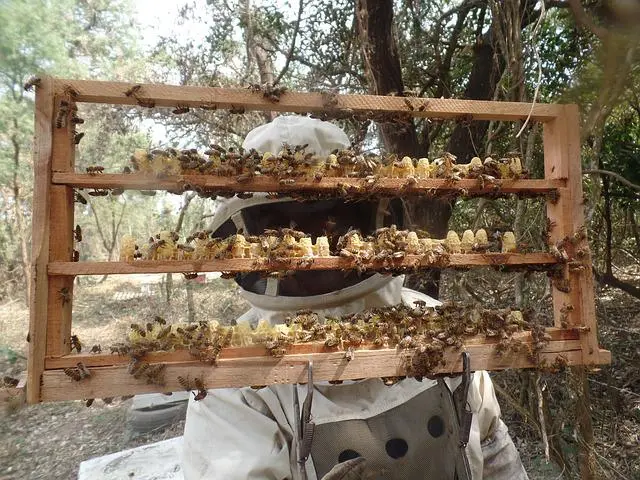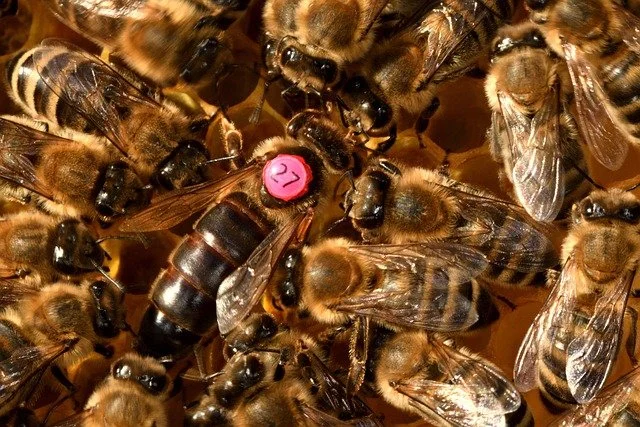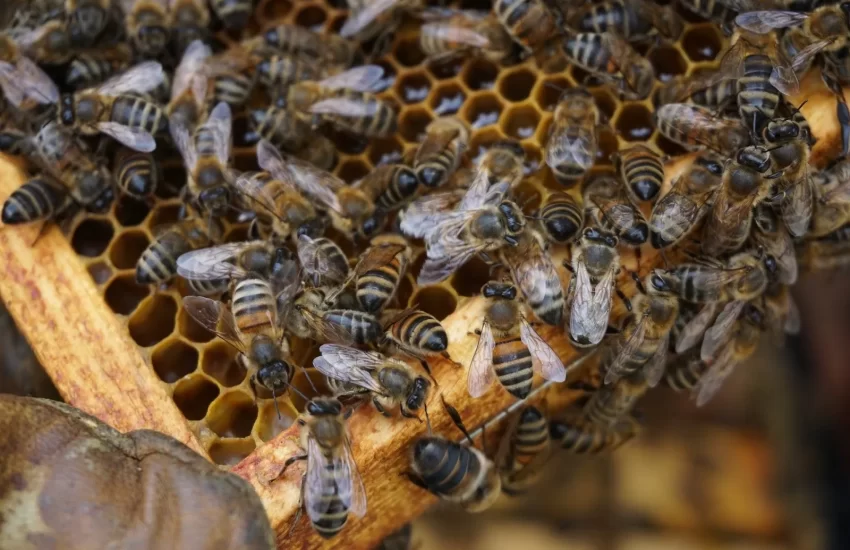What Is A Queen Cup? How to grow a queen bee?
While the idea of raising a queen doesn’t run in a new beekeeper’s mind, it is necessary as one advances in the journey. Bee colonies die out every year and raising queens become instrumental in making new colonies. It may be seen as an expert-level practice, although it is easy even for inexperienced beekeepers.
Surprisingly, a honey bee colony also has the potential to raise a new queen in case a colony is queenless, or the current one is unproductive. This is one of the ways that a colony is able to sustain itself year after year. The bees even prepare in advance by making queen caps which they transform into queen cells in case the need for a new queen arises. These are more common in spring and summer. Most beekeepers are worried when they find several in the nest while carrying out an inspection.
Similar Articles you may like to read –
What Do Bees Eat? Do bees eat Honey? Do queen Bees eat Honey?
Are queen bees born or made?
How Many Times Does A Queen Bee Get Mated?
How to Identify the Queen Bee
How to requeen a beehive? When The Queen Dies
Why do bees make queen cells?
Here are some of the instances that prompt them to make queen cells:
If the colony wants to swarm
A honey bee colony resolves to swarming when there is overcrowding in the hive. This is their natural way of propagation. In preparation for swarming, they raise a new queen to take over the former hive as half of the population moves out to seek a new home with the old queen. Queens raised in such a situation are usually well developed and have an excellent egg-laying capacity. Since they were prepared to become queens from the onset, they are fed with a proper diet from the time of hatching. Again, there is a queen in the colony; hence the bees take their time to raise her.
If the current queen is unproductive
A productive queen can lay up to 2000 eggs daily in the peak seasons. As she ages, she may become less effective or lay low-quality eggs. Her pattern of laying becomes spotty. In such a situation, workers raise a new queen to replace her.
If a queen gets lost or dies
When a queen suddenly dies or goes missing, an emergency exists. The bees act quickly to raise a new queen as soon as possible with what is available. The workers may pick a larva that was previously destined to be a worker and feed it exclusively with royal jelly. A queen raised in this manner may have a reduced egg laying capacity. I have written an article on” what happens when a queen bee dies?”. you may check it for more information about queen bees.
What is the difference between a queen cup and a queen cell?

A queen cup is a tiny cup usually located on the bottom of the frame. It is constructed directly on the comb, and its opening is on the bottom of the cup. Honey bees usually make plenty of these just in case a need arises. Their presence doesn’t mean they are making a new queen though they indicate the initial stage of a queen cell.
A queen cell is an advanced stage of the queen cup and looks much longer. It may be hard to see them since they are often covered by nurse bees tending the developing queen. A queen cup only becomes a cell when an egg or larva is present.
How to Grow Queen Bees
Beekeepers usually requeen their colonies with queens that possess desirable qualities. They also replace old queens who have reduced egg laying capacity or when she dies. You may also want to learn more on “How to requeen a beehive when a queen bee dies”. While laying queens can be bought from queen breeders, a beekeeper with the necessary skills of bee handling can rear them. Here are the requirements to obtain quality queens:
- A queen mother to breed from. Her offspring(worker bees) should portray good traits such as high honey production, disease and pest resistance, low swarming tendency, low robbing tendency, and possess a gentle temperament.
- Ideal starter and cell-raising colonies
- Presence of sexually mature and high-quality drones to mate with the newly raised queens.
- An abundant supply of nectar and quality pollen
- Conducive weather for mating of drones and queens
Here are ways to raise a new queen:
Splitting a Thriving Hive
Splitting an existing bee colony in half pushes the bees in the queenless half to raise a new queen. This is an effortless way to get a new hive. All you must do is place brood frames within the splits since you will divide the brood box into two.
One brood box is left with the current queen, who will continue to lay eggs, while the second brood box will have fresh 1-3 day eggs, bees, honey and bee bread. You can also take bees from two healthy hives and make a third one. After about 24 hours, the hive without a queen will realise the absence of a queen and begin raising a new queen. You should fill empty slots in both hives with foundation or drawn comb frames. Place them between honey frames and brood frames.
Forced Overcrowding
This method is a simple option that triggers swarming conditions, but you prevent it before it happens. You do this by restricting the space available for your bees by taking away the empty comb. This limits the room for the bees to lay eggs, store honey, and move around, which prompts swarm behaviour. As the bees prepare to swarm, they create some queen cells. Once the queen cells are capped, you carefully cut them and place them in the queenless hive. You should remove them on time because if a queen emerges, she will kill all the others. It is also good to place a queen excluder at the entrance to prevent swarming. After removing the queen cells, you can replace the empty comb frames and provide ample room for the bees to thrive again.
Grafting

Grafting is a method of rearing queens that involves transferring larvae from a brood cell into an artificial cell cup. A starter colony must be available to receive the grafted larvae. This method requires practice and a steady hand. It is not efficient for every beekeeper. Here is how to do it;
Establishing a Starter Colony
A starter colony is a queenless hive. You should choose a strong colony, preferably with plenty of honey, pollen, and young nurse bees. The state of queenlessness triggers the nurse bees to produce more brood food and raise new queen cells with the available larvae. You will place the grafted larvae in this colony.
Grafting
You should prepare cells by sticking about 20 plastic cell cups to a waxed bottom bar. They resemble queen cells that bees naturally make to raise queen bees. Ensure to place the bar 24 hours earlier so the bees can clean the cups. Use a grafting tool to transfer larvae into the queen cells. You should only graft larvae under 24 hours of age and float in abundant royal jelly. You should also choose a queen stock (larvae) from a colony with desirable qualities. Avoid grafting in hot weather or when there is low humidity. Early morning is ideal when the weather is relatively cool. Now, the hive has many nurse bees and food stores. Since it is queenless, it will be highly motivated to look after the freshly grafted larvae and draw out the queen cells with wax. After four days, the nurse bees cap the queen cells, which now resemble waxy peanuts.
Transferring the Capped Queen Cells
A queen emerges after 16 days from the time the eggs were laid. If you graft a larva that is 24 hours old, she will emerge 12 days later. You should be careful not to leave the cells for too long in the starter colony since if a young queen emerges, she will destroy all the other cells. They should be taken from the colony a day before emergence and placed in queen cages or mating boxes. If you choose to sell your queens as virgins, you will leave them in cages until they are sold.
Another option is placing the capped queen cells in colonies that you want them to lead. You should remove the current queens in the colonies a day before. After emergence from the cells, they will become acquainted with the new colonies and take mating flights after a few days before they start laying eggs.
The Jenter System
The Jenter system is completely graftless. It consists of a device that resembles a box with 110 plastic cells, a portion where the queen is placed, and closures. The queen lays her eggs directly on the cell cups. The method allows you to raise 110 queens at once, making it ideal for a person who wants numerous queens. In addition, the cups are reusable. You will require a cell building hive before you transfer the cell cups.
The cups are removed from the Jenter cage, fastened to a cell bar, and placed in a cell builder hive. Acceptance by a cell builder colony is better if the eggs have already hatched into larvae. This method is not ideal for beekeepers who just need a few queens.
Does the presence of a queen cap indicate that the colony wants to swarm?
Queen cups are just an insurance policy for the honey bee colony if the need for a new queen bee arises. In fact, most of the cups never develop into elongated cells that produce new queens. Colonies keep around 10 of them all year around. An inexperienced beekeeper will interpret their presence as preparation for swarming, but this is not always the case. Its presence is not an indicator of queen-rearing activity. If the worker wants the queen to lay an egg on it, they will polish it. If it contains an egg or larvae, it is a cause of alarm. During regular hive checkups, it is inside queen cups.
More articles you may like to read –
How many queen cells should you leave?
Can a hive live without a queen? How can you tell a Queenless hive?
Why do beekeepers remove the queen?
Can a queen bee hurt you? What happens if a queen bee stings you?
Stages of a Queen Development
Presence of a Queen Cap
Queen cells are usually inside queen caps. There can’t be a queen cell without a queen cap.
Open Cells( Uncapped cells)
This represents the larval stage. You will find larva in a queen cap. A queen cannot fit in a new normal brood cell; hence the open cell will be visible on the face of the comb or the bottom of a frame. A glimpse in the cell will reveal a growing larva in a bed of royal jelly.
Capped Queen Cell
As the queen completes her larval stage, she ceases to eat. Worker bees cap the end of the cell with wax. The larva enters the pupa stage, spins a cocoon around herself, and completes the transformation into an adult bee.
Adult queens
An adult emerges from the cocoon after 16 days from the initial egg stage. After emergence, her first task is to seek other queens and sting them to death. It takes another few days to mature before she takes her mating flights. After mating with several drones, she is ready to start laying eggs.
FAQS
What are the benefits of raising your queen?
There are many benefits of raising new queens. Firstly, you can requeen your hives when necessary. You can make new colonies compensate for losses and sell queens to fellow beekeepers. This is one of the many ways you can profit as a beekeeper.
How can you differentiate between old and new queen cups in a hive?
Finding queen cups from previous years in the hive is not unusual. If a need to raise a new queen arises, the bees mainly turn newly made queen cups into queen cells. Old queen cups tend to be hard and dark, while new queen cups are soft, fragile, and smartly formed over the edges. Since the new ones are delicate, it is easy to damage them.



